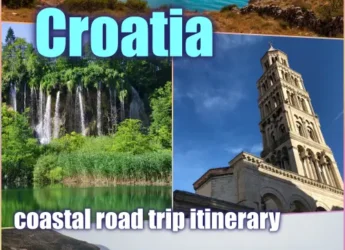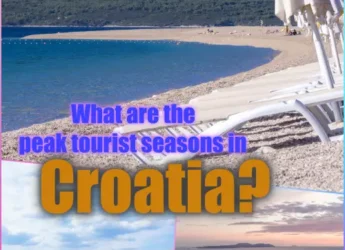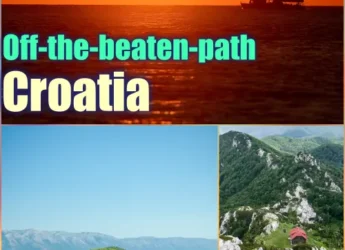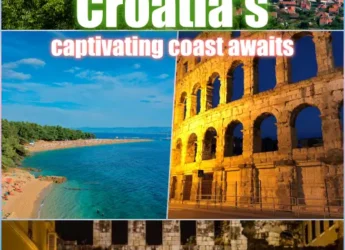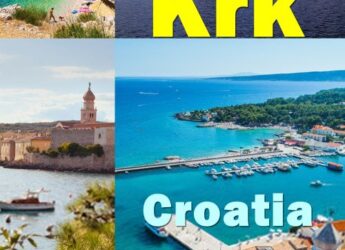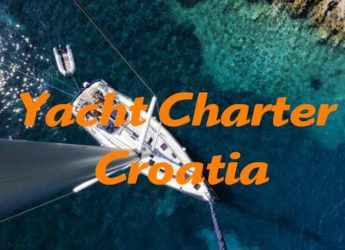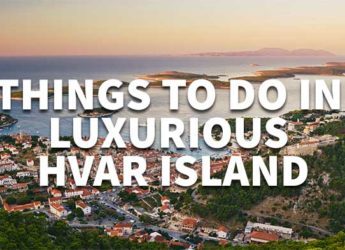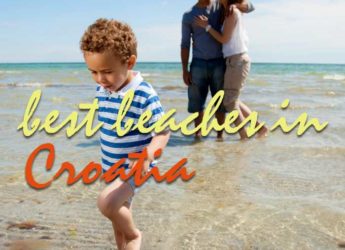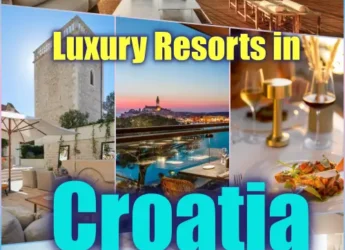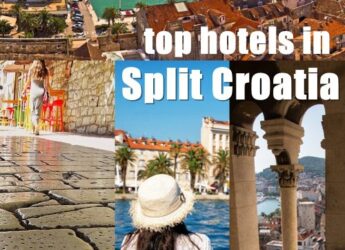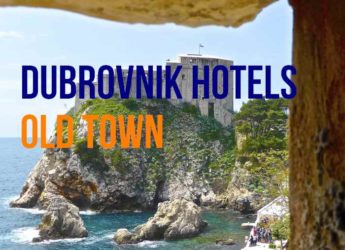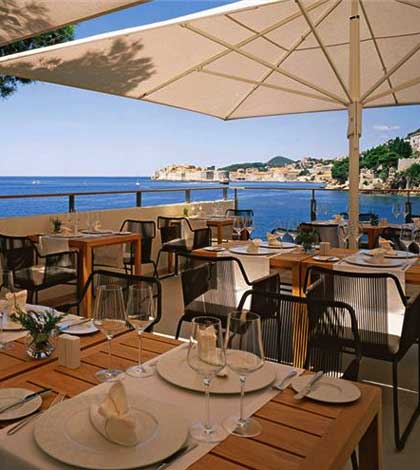Itinerary for Exploring Coastal Croatia

Croatia’s Adriatic coastline is a road-tripper’s dream, blending medieval towns, turquoise waters, and dramatic landscapes. This itinerary balances iconic stops, hidden gems, and scenic drives, with flexibility for your pace.
The Ultimate Road Trip Itinerary for Exploring Coastal Croatia
Duration: 10–14 Days | Route: Dubrovnik to Istria (or Zagreb)
Day 1–2: Dubrovnik – The Pearl of the Adriatic
Nestled along Croatia’s sun-drenched Dalmatian Coast, Dubrovnik enchants with its medieval grandeur and sparkling Adriatic vistas. Dubbed the “Pearl of the Adriatic” by poet Lord Byron, this UNESCO World Heritage Site is famed for its iconic terracotta rooftops and imposing 16th-century walls. Step into the marble-paved Stradun, the bustling heart of the Old Town, where baroque churches, Gothic palaces, and lively cafés converge. Walk the ancient walls for breathtaking views of the azure sea and orange-tiled skyline, or explore landmarks like the Rector’s Palace and the Franciscan Monastery, home to Europe’s oldest pharmacy.
Highlights:
- Arrive in Dubrovnik and check into your accommodation.
- Walk Dubrovnik’s ancient city walls for panoramic views of orange rooftops and the sea, visit sites like the Rector’s Palace, and Sponza Palace.
- Explore Lovrijenac Fortress (a Game of Thrones filming spot) and the Baroque Stradun Square.
- Take the cable car to Mount Srđ for sunset.
- Swim at Banje Beach or kayak to Lokrum Island.
- Enjoy dinner at a local restaurant with views of the Adriatic Sea.
Stay: Boutique hotels inside the Old Town or quieter seaside spots like Lapad.
Drive Tip: Park outside the Old Town (Gruž Harbor has affordable lots).
Fans of Game of Thrones will recognize Lovrijenac Fortress and other filming locales, while nearby Lokrum Island offers serene pine forests and hidden coves. Dive into the Adriatic’s crystal waters at Banje Beach, or ride the cable car to Mount Srđ for sunset panoramas. Taste fresh seafood and Dalmatian wines at cliffside taverns, then join summer festivals that breathe music and drama into historic squares. With its blend of timeless beauty and vibrant culture, Dubrovnik is a jewel waiting to be discovered—best enjoyed in spring or fall, when crowds thin and the Mediterranean light glows golden.
Day 3: Pelješac Peninsula & Ston – Oysters and Vineyards
Just an hour north of Dubrovnik, the rugged Pelješac Peninsula unfurls like a tapestry of sun-soaked vineyards, olive groves, and fishing villages, offering a quieter slice of Dalmatian charm. At its gateway lies Ston, a medieval marvel famed for its 14th-century walls—Europe’s longest fortification system—and centuries-old salt pans. But Ston’s true treasure lies in Mali Ston Bay, where briny Adriatic waters nurture plump, world-renowned oysters. Taste them fresh at waterfront taverns, paired with local wines, for a taste of the region’s soul.
Drive: 1.5 hours north to Pelješac.
Highlights:
- Stop in Ston, famous for medieval walls (the “European Great Wall”) and fresh oysters at family-run farms.
- Wind through vineyards in Dingač and Postup, tasting bold Plavac Mali wines.
- Relax in Trpanj or Orebić, with views of Korčula Island.
Stay: A rustic vineyard guesthouse or seaside villa.
Inland, Pelješac’s terraced slopes produce Croatia’s finest reds, like robust Dingač and Postup, born from the mineral-rich soil and sea-kissed breeze. Cycle through vine-striped valleys, tour family-run wineries, or wander hilltop villages like Orebić, gazing across the azure channel to Korčula. Along the coast, secluded pebble beaches and quiet harbors invite lazy swims or sunset sails. A blend of ancient tradition, gastronomic delight, and untamed beauty, Pelješac and Ston are a feast for the senses—best enjoyed with a glass in hand and the Adriatic sun on your skin.
Day 4: Korčula Island – Medieval Charm
A stone’s throw from the Pelješac Peninsula, Korčula rises from the Adriatic like a storybook vision of cypress forests, vineyards, and honey-hued stone villages. Often dubbed “Little Dubrovnik,” its fortified Old Town is a medieval maze of cobblestone alleys, Venetian Gothic palaces, and churches crowned with terracotta domes. Legend claims it’s the birthplace of Marco Polo—visit his alleged childhood home and climb the tower of St. Mark’s Cathedral for sweeping views of the Pelješac Channel.
Ferry: 15 min from Orebić to Korčula Town (cars allowed).
Highlights:
- Wander Korčula’s Venetian-style Old Town, birthplace of Marco Polo.
- Swim at Vela Pržina Beach or hike to Badija Monastery.
- Sample local Grk wine and fresh seafood.
Stay: Korčula Town for nightlife or a secluded coastal village.
Korčula’s sun-drenched slopes produce Croatia’s vibrant white wines, like zesty Pošip and the rare Grk, best sipped at rustic konobas (taverns) alongside fresh seafood and olive oil-drenched dishes. Cycle through olive groves to secluded coves like Vela Pržina, or kayak the island’s jagged coastline to hidden pebble beaches. Don’t miss the Moreska sword dance, a centuries-old performance of clashing blades and dramatic folklore, or the wild beauty of Lumbarda, where sandy shores meet turquoise waters.
With its blend of Adriatic tranquility, rich history, and culinary passion, Korčula is an island to wander slowly—preferably at sunset, with a glass of local wine in hand and the sea breeze weaving through ancient stone streets.
Day 5–6: Split – Ancient Meets Modern
Croatia’s vibrant second city, Split, pulses with life where Roman history collides with Mediterranean flair. At its heart lies Diocletian’s Palace, a UNESCO-listed 4th-century marvel where labyrinthine alleys hide bustling cafés, artisan shops, and centuries-old temples—now part of the city’s living fabric. Climb the bell tower of St. Domnius Cathedral for panoramic views of terracotta rooftops and the glittering Adriatic, or wander the Peristyle Square, where street musicians echo the palace’s ancient acoustics.
Drive: 2.5 hours north (including ferry from Korčula to Omiš).
Highlights:
- Explore Diocletian’s Palace, a Roman emperor’s retirement home turned living city.
- Climb Marjan Hill for sunset views over the harbor.
- Day trip to Brač Island (1-hour ferry): Visit Zlatni Rat Beach or hike Vidova Gora.
- Optional: Ferry to Hvar (car-free; park in Split).
Stay: Split’s Veli Varoš district for local vibes.
Split’s seafront Riva Promenade thrums with energy, lined by palm trees and lively bars serving rakija (fruit brandy) and fresh seafood. Just steps away, Bačvice Beach invites sunbathing and a dip in its shallow, turquoise waters—don’t miss trying soparnik (Swiss chard pie), a Dalmatian staple. For adventure, hike up Marjan Hill, a forested oasis offering cliffside vistas, or hop a ferry to nearby islands like Brač or Hvar.
By night, the palace’s cellars host wine tastings, while summer festivals transform ruins into stages for opera and DJ sets. With its mix of antiquity, coastal charm, and infectious energy, Split is a city to savor—ideally with a gelato in hand, as the golden light bathes Emperor Diocletian’s enduring legacy.
Day 7: Krka National Park & Šibenik – Waterfalls and Fortresses
Just inland from Croatia’s Dalmatian coast, Krka National Park dazzles with its cascading waterfalls, emerald pools, and lush forests. The star is Skradinski Buk, a curtain of water tumbling over 17 terraced travertine barriers, best explored via wooden walkways that weave through mist and moss. Cruise to Visovac Island, a serene Franciscan monastery floating on the river, or wander the Ethno Village to glimpse traditional mill life. Though swimming is now restricted at the falls, the park’s quieter trails and boat tours offer tranquil communion with nature.
Drive: 1 hour to Krka.
Highlights:
- Hike through Krka National Park and swim under Skradinski Buk waterfall.
- Visit Šibenik, a UNESCO gem: Explore the St. James Cathedral and St. Nicholas Fortress.
Stay: Šibenik’s historic center or a waterfront hotel.
Nearby, the medieval city of Šibenik rises in stone splendor, crowned by the UNESCO-listed St. James’s Cathedral, a masterpiece of Renaissance architecture built entirely from stone—no nails or wood. Lose yourself in its labyrinth of steep, cobbled streets, where Venetian-era palaces and hidden courtyards whisper tales of maritime glory. Climb the hilltop St. Michael’s Fortress for panoramic views of the Adriatic and the park’s distant peaks. Šibenik’s vibrant waterfront buzzes with konobas serving škampi na buzaru (shrimp in garlic sauce) and crisp local wines, while summer festivals light up its ancient squares.
Together, Krka’s wild beauty and Šibenik’s timeless grit create a harmony of nature and history—perfect for adventurers and dreamers alike. Visit in spring for blooming meadows or autumn for golden tranquility, when Dalmatia’s soul shines brightest.
Day 8: Zadar – Sunsets and Sea Music
Perched on Croatia’s sunlit Dalmatian coast, Zadar enchants with its blend of ancient grit and avant-garde whimsy. At its heart lies a compact, car-free Old Town, where Roman ruins and Venetian palaces jostle with lively cafés and boutiques. Marvel at the 9th-century St. Donatus Church, a hulking Byzantine rotunda, and the remnants of the Roman Forum, where locals gossip beneath millennia-old columns. But Zadar’s magic truly ignites at sunset: the Sea Organ, an architectural marvel of underwater pipes, transforms waves into haunting melodies, while the nearby Sun Salutation, a solar-powered light installation, dances underfoot like a starry sky.
Drive: 1 hour north.
Highlights:
- Listen to the Sea Organ and watch the Sun Salutation light show.
- Explore Roman ruins and the quirky Museum of Ancient Glass.
- Day trip to Pag Island for moonlike landscapes and sharp Paški cheese.
Stay: Old Town boutique hotel.
Stroll the marble-paved Kalelarga (Zadar’s main street), savor maraschino liqueur—a cherry brandy invented here—or feast on Adriatic squid ink risotto at waterfront taverns. Nearby, the Kornati Islands beckon sailors with their jagged, uninhabited beauty, while Paklenica National Park lures hikers with its dramatic limestone gorges.
Zadar’s charm lies in its contrasts: sacred and playful, timeless and inventive. Visit in autumn, when crowds thin and the Adriatic glows amber, or linger over a glass of Babić wine as the Sea Organ’s symphony merges with the whispers of Roman emperors and Venetian merchants. Here, the past doesn’t just echo—it sings.
Day 9: Plitvice Lakes National Park – Emerald Wonderland
A UNESCO World Heritage Site and nature’s masterpiece, Plitvice Lakes National Park is a cascading wonderland of 16 terraced lakes, linked by waterfalls that tumble over mossy travertine barriers. The water shifts from emerald to turquoise under shifting sunlight, framed by ancient beech and pine forests that blaze gold in autumn. Wooden boardwalks wind through this living canvas, guiding visitors past roaring cascades like the 78-meter Veliki Slap (Great Waterfall) and mirror-still pools where trout dart beneath the surface.
Drive: 1.5 hours inland.
Highlights:
- Spend a full day hiking Plitvice’s 16 terraced lakes and waterfalls (arrive early to avoid crowds).
Stay: Eco-friendly lodges near the park.
Glide across glassy Kozjak Lake on electric boats, or hike trails that reveal hidden viewpoints and quieter corners, like the ethereal Lower Lakes or the serene Upper Lakes, where dragonflies dance above misty lagoons. Though swimming is forbidden, the park’s raw, untamed beauty—butterflied by boardwalks and bridges—feels plucked from a fairy tale.
Visit in spring, when snowmelt swells the falls into thunderous veils, or in autumn, when the foliage ignites in fiery hues. Plitvice’s magic lies in its timeless symphony of water, stone, and forest—a place where nature’s artistry humbles even the busiest souls. Come early, wander slowly, and let the park’s ever-changing palette remind you why Croatia’s wild heart beats brightest here.
Day 10–12: Istria – Croatia’s Tuscany
Jutting into the Adriatic like a heart-shaped mosaic, Istria enchants with its rolling green hinterland, Venetian-flavored coastal towns, and hilltop villages steeped in Old World mystique. Dubbed “Croatia’s Tuscany,” this northern gem blends Italian dolce vita with Slavic soul. Wander Rovinj, a postcard-perfect fishing port where pastel houses cluster around a baroque church, or explore Pula’s colossal Roman Arena, still hosting summer concerts after 2,000 years.
Drive: 3 hours to Istria (or extend to 14 days for a relaxed pace).
Highlights:
- Rovinj: A postcard-perfect fishing town with pastel houses and St. Euphemia’s Basilica.
- Pula: Roman Amphitheatre and Cape Kamenjak’s cliffs.
- Motovun: Truffle hunting in Istria’s hilltop villages.
- Poreč: UNESCO-listed Euphrasian Basilica.
Stay: Agrotourism farms for truffle feasts or coastal villas.
Inland, medieval Motovun crowns a hilltop, its stone walls gazing over vineyards and truffle-rich forests. Join a truffle hunt, then feast on shaved black gold over handmade fuži pasta, paired with earthy Teran wine. Istria’s culinary prowess shines in olive oil tastings and seafood risottos laced with wild asparagus.
Cyclists pedal the Parenzana Trail, tracing an old railway through vineyards, while artists flock to Grožnjan, a hilltop village alive with galleries and jazz. Along the coast, dive into the turquoise coves of Cape Kamenjak or sail to the secluded Brijuni Islands, once Tito’s private retreat.
With its lavender-scented summers, truffle-laced autumns, and cypress-striped horizons, Istria is a feast for the senses—best savored slowly, with a glass of Malvazija wine in hand, as the sun dips into the Adriatic.
Day 13–14: Return to Zagreb or Rijeka
Drive: 2.5 hours to Zagreb.
Highlights (Zagreb):
- Explore Upper Town (Gornji Grad), Dolac Market, and the Museum of Broken Relationships.
- Day trip to Samobor for cream cakes and medieval charm.
Optional Coastal Finish: End in Rijeka, gateway to the Kvarner Gulf.
Road Trip Essentials
- Car Rental: Automatic cars book early in summer. Include insurance for coastal roads.
- Driving Tips:
- Pelješac Bridge (opened 2022) connects Dubrovnik to Pelješac, avoiding Bosnia.
- Coastal roads (D8) are scenic but slow; highways (A1) save time (toll fees apply).
- Ferries: Book car spots in advance (Jadrolinija.hr).
- When to Go: May–June or September for fewer crowds, warm weather, and lower prices.
Croatia’s coast is a tapestry of history, nature, and Mediterranean flavors. This road trip lets you savor it all—from Dubrovnik’s grandeur to Istria’s rustic magic—with the freedom to stop wherever the Adriatic breeze takes you.
FAQs for Ultimate Road Trip Itinerary for Exploring Coastal Croatia
What is the best time of year to embark on a coastal road trip in Croatia?
The best time is between May and September, offering warm weather, clear skies, and ideal swimming conditions. Shoulder seasons (May–June, September) are perfect for fewer crowds and lower prices.
How many days are ideal for exploring Croatia’s coastline by car?
A 10 to 14-day road trip is ideal to cover top coastal cities, hidden beaches, and islands without feeling rushed.
Which coastal towns and cities are must-visits on a Croatian road trip?
Top must-visit towns include:
Dubrovnik (UNESCO Old Town)
Split (Diocletian’s Palace)
Zadar (Sea Organ)
Rovinj (Colorful old town)
Trogir (Medieval charm)
Pula (Roman amphitheater)
Are there any toll roads along Croatia’s coastal highways?
Yes, tolls apply on Croatia’s A1 motorway and other highways. Payment can be made by cash or card at toll booths.
What are the accommodation options available along the Dalmatian coast?
Options range from luxury hotels, boutique guesthouses, budget hostels, to Airbnbs and campsites.
Can I rent a car in Croatia with a foreign driver’s license?
Yes, most rental companies accept foreign licenses. An International Driving Permit (IDP) may be required if your license is not in Latin script.
Is it safe to swim at the beaches along the Croatian coast?
Absolutely! Croatia’s beaches are clean, safe, and family-friendly, with many awarded Blue Flag status for water quality.
Are there any UNESCO World Heritage sites along Croatia’s coast?
Yes, including:
Old Town Dubrovnik
Diocletian’s Palace in Split
St. James Cathedral in Šibenik
Trogir Historic Town
How accessible are the Croatian islands from the mainland during a road trip?
Ferries run frequently between the mainland and islands like Hvar, Brač, Korčula, and Mljet, making island-hopping easy. Booking in advance during high season is recommended.



